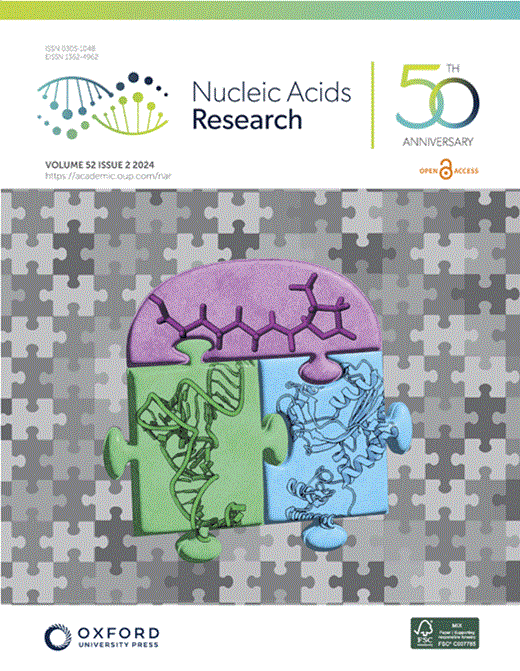Maternal histone mRNAs are uniquely processed through polyadenylation in a Stem-Loop Binding Protein (SLBP) dependent manner
IF 16.6
2区 生物学
Q1 BIOCHEMISTRY & MOLECULAR BIOLOGY
引用次数: 0
Abstract
During early embryogenesis the zygotic genome remains transcriptionally silent and expression relies on maternally deposited products. Maternal deposition of histones is crucial to preserve chromatin integrity during early embryo development, when the number of nuclei exponentially increases in the absence of zygotic expression. In the Drosophila embryo, histones are maternally deposited as both proteins and mRNAs. Histone transcripts are the only nonpolyadenylated cellular mRNAs. They contain a highly conserved 3′UTR stem-loop structure, which is recognized by the Stem-Loop Binding Protein (SLBP) that, in conjunction with U7 snRNP, regulates their unique 3′-end processing. Here we report that, unexpectedly, maternal histone mRNAs are polyadenylated and have a truncated 3′ stem-loop. This noncanonical 3′-end processing of maternal histone mRNAs occurs at their synthesis during oogenesis and requires SLBP, but not U7 snRNP. We show that maternal histone transcripts are subjected to cytoplasmic poly(A) tail elongation by Wisp, which results in their stabilization and is a requisite for translation. We also show that maternal histone transcripts remain largely quiescent and that their translation is activated upon loss of the embryonic linker histone dBigH1, which impairs chromatin assembly and induces DNA damage. Here, we discuss possible models to integrate these observations.母体组蛋白 mRNA 以茎环结合蛋白 (SLBP) 依赖性方式通过多腺苷酸化进行独特加工
本文章由计算机程序翻译,如有差异,请以英文原文为准。
求助全文
约1分钟内获得全文
求助全文
来源期刊

Nucleic Acids Research
生物-生化与分子生物学
CiteScore
27.10
自引率
4.70%
发文量
1057
审稿时长
2 months
期刊介绍:
Nucleic Acids Research (NAR) is a scientific journal that publishes research on various aspects of nucleic acids and proteins involved in nucleic acid metabolism and interactions. It covers areas such as chemistry and synthetic biology, computational biology, gene regulation, chromatin and epigenetics, genome integrity, repair and replication, genomics, molecular biology, nucleic acid enzymes, RNA, and structural biology. The journal also includes a Survey and Summary section for brief reviews. Additionally, each year, the first issue is dedicated to biological databases, and an issue in July focuses on web-based software resources for the biological community. Nucleic Acids Research is indexed by several services including Abstracts on Hygiene and Communicable Diseases, Animal Breeding Abstracts, Agricultural Engineering Abstracts, Agbiotech News and Information, BIOSIS Previews, CAB Abstracts, and EMBASE.
 求助内容:
求助内容: 应助结果提醒方式:
应助结果提醒方式:


